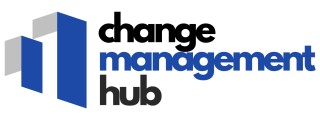
Understanding the Need for Change Management Tools
Why Change Management Tools are Crucial
In today's fast-paced business environment, the ability to adapt and manage change effectively is vital. Projects and tasks are becoming increasingly complex, and tools like Trello have long been favored for their straightforward Kanban board approach. But why is there a growing need for alternatives, and what exactly makes these tools so indispensable?
Change management tools play a critical role in helping teams and organizations navigate transformations smoothly. Whether it's a shift in business strategy, a merger, or the introduction of new technology, these tools provide a structured approach to planning, executing, and monitoring the impact of change. They support teams in breaking down complex projects into manageable tasks, ensuring that nothing gets overlooked.
Trello and its alternatives, such as Monday.com, Airtable, and Microsoft Planner, offer an array of features that cater to the diverse needs of users. These tools not only facilitate task management through Kanban boards but also integrate with Gantt charts, time tracking, and real-time updates, making them essential for comprehensive project management.
The increasing reliance on digital solutions has made it crucial for businesses to be adaptable. A management tool that offers flexibility can be the difference between a successful project and one that falls short. Free plans and tiered pricing make it accessible for businesses of all sizes, while paid plans provide additional functionalities for more demanding projects.
Understanding the role of these tools sets the stage for exploring Trello alternatives and identifying key features that can drive successful change management initiatives. As we delve deeper, we'll explore various platforms and uncover the best fit for different organizational needs.
Key Features to Look for in Trello Alternatives
Identifying Essential Features in Alternatives
When searching for alternatives to Trello for change management, there are several key features you should consider to ensure effective project oversight. These attributes are essential as they address various aspects of project and task management that contribute to a seamless workflow and successful execution.- Comprehensive Project Views: The ability to switch between different views, such as Gantt charts and kanban boards, helps users visualize projects from multiple perspectives. Tools that offer this flexibility allow teams to better manage complex projects and adapt to different planning styles.
- Task Management Capabilities: Effective task management involves not only tracking but also prioritizing and delegating tasks. Look for software that offers detailed task descriptions, due dates, and dependencies to streamline operations.
- Real-Time Collaboration: In today's fast-paced work environments, real-time collaboration features are crucial. A robust alternative should enable users to engage with team members dynamically and keep everyone updated on the latest developments, much like how Trello enables real-time interaction.
- Customizable Kanban Boards: While Trello is renowned for its kanban-style workflow, finding a tool that offers customizable kanban boards is critical. This customization allows teams to modify processes according to project requirements, enhancing overall efficiency.
- Integration Options: Seamless integration with other software like Microsoft Planner or Microsoft Project can be a game-changer. This enables teams to leverage existing tools and data, improving transition and reducing the learning curve associated with new software.
- Pricing Plans: Understanding the pricing structure, especially the availability of free plans or affordable paid plans, is vital. Consider solutions that offer competitive pricing, allowing businesses to scale as needed without incurring excessive costs.
- Usability and Learning Curve: A lower learning curve can significantly impact user adoption rates. Tools with intuitive interfaces that don’t necessitate extensive training align well with teams aiming for minimal disruption during transition periods.
Top Trello Alternatives for Change Management
Top Tools for Effective Project Management
Switching from Trello to an alternative platform can offer a new perspective on managing tasks and projects. Although Trello has long been a favorite for its simple visual approach through kanban boards, exploring other options might provide features that cater better to your team's specific needs.
Here are some noteworthy Trello alternatives, each bringing unique strengths to project and task management:
- Airtable: Known for its flexibility, Airtable combines the features of a spreadsheet with a database. Users can easily switch between different views, such as kanban boards and Gantt charts, which can be extremely useful for complex project management. Its free plan is quite generous, making it an attractive option for small teams.
- Monday.com: This platform has garnered positive reviews on Capterra for its intuitive interface and range of management tools. Monday.com allows teams to plan and execute tasks in real time with features such as time tracking and automation, offering paid plans that cater to more advanced needs as teams scale.
- Microsoft Planner: Designed for simplicity, Microsoft Planner integrates seamlessly with other Microsoft tools like Excel and Teams. It is an excellent choice for those already embedded in the Microsoft ecosystem, making project management straightforward for team collaboration.
- Asana: Asana focuses on creating clarity around tasks and timelines. Its kanban board view is just one of many features that support task management, making it a strong Trello alternative for those who require detailed project tracking and communication.
- ClickUp: Offering an all-in-one management solution, ClickUp includes a variety of task views and integrates well with other software. It's noted for its wide range of features under its free plan, providing robust management tools without immediate cost.
While each tool offers various advantages and may appeal to different types of users, evaluating these options helps ensure the best fit for your team's operations. Reviews and real-time user feedback can further assist in deciding which software aligns best with your workflows and management style.
Case Studies: Successful Change Management with Trello Alternatives
Illustrative Examples of Trello Alternatives in Action
One of the benefits of considering various tools for project management is the opportunity to explore case studies that offer real-world insights into successful implementations. Users have diverse needs when it comes to managing tasks, projects, and teams. By examining successful use cases of some Trello alternatives, we can better understand their practical applications and value.
- Airtable's Versatility: Known for its flexibility, Airtable caters to complex project management needs by allowing teams to create customized views and Kanban boards that fit their specific workflow. For instance, a marketing team tasked with a product launch successfully leveraged Airtable's grid view and link feature to connect various tasks and manage dependencies efficiently. The real-time collaboration features, combined with powerful database-like functionality, made it possible to streamline operations and adhere to tight deadlines.
- Monday.com's Structured Approach: With its strong emphasis on task management and visualization through its highly customizable boards, Monday.com supports various industries, from tech startups to large corporations. In one case, an IT team implemented Monday.com to monitor project status across multiple departments. The tool's ability to use integrations and automations reduced manual updates, optimizing time management and enhancing coordination.
- Microsoft Planner's Seamless Integration: As part of the Microsoft ecosystem, Planner offers easy integration with tools like Microsoft Teams and Microsoft Project, an advantage for organizations already using Microsoft's suite. A software development team utilized Microsoft Planner for its task management and gantt charts features, effectively managing sprints and allocating resources. Its seamless integration with other Microsoft tools allowed for efficient resource planning and minimized switching costs.
Overcoming Transition Hurdles
Switching to a new project management software often presents challenges in adaptation and training. A significant hurdle identified in reviews from platforms like Capterra is the learning curve associated with mastering new systems. Organizations opting for free plans or paid plans must weigh the benefits of feature-rich solutions against the investment in training requirements. Effective change management strategies, such as providing comprehensive training sessions and phased rollouts, can significantly reduce user resistance and build confidence across teams.
For many teams seeking the best Trello alternative, exploring real-world applications and transition experiences can be an enlightening step in decision making. Thoroughly assessing your organization’s needs against the features offered can provide the roadmap to enhanced productivity and collaborative success.
Challenges in Transitioning to a New Tool
Navigating the Switch to a New Tool: Overcoming Hurdles
Transitioning from a familiar project management tool like Trello to a new platform can be daunting. Users may face a range of challenges that include understanding new features, adapting to a different interface, and ensuring smooth collaboration across teams and tasks. Before making the switch, it is essential for teams to consider the following aspects:- Learning Curve: Adjusting to a new management tool often involves overcoming a significant learning curve. Users need time and training to become familiar with new functionalities, whether it involves Kanban boards in Airtable, Gantt Charts in Microsoft Project, or time tracking features in Monday.
- Data Migration: One of the most significant challenges is migrating existing projects and tasks into the new tool. This process must be handled carefully to avoid data losses or discrepancies.
- Integration with Existing Systems: For teams that rely heavily on integrations with tools like Microsoft Planner or other task management software, ensuring seamless interoperability with the new platform is crucial.
- Pricing and Plans: Comparing the pricing of free and paid plans is vital. Teams need to assess whether the features offered by Trello alternatives, such as real-time collaboration or complex task management, justify the cost, especially when transitioning from a free plan.
- User Buy-In: Securing buy-in from all team members is essential to a successful transition. User engagement can be fostered through demonstrations, training sessions, and by emphasizing the benefits observed in case studies from other teams.
Future Trends in Change Management Tools
Anticipating Future Changes in Management Tools
In the world of project management, the evolution of tools and technologies continues to introduce new ways of enhancing team effectiveness and productivity. Efficient change management requires staying abreast of these developments to ensure your team is equipped with the best tools available. As teams look for Trello alternatives, understanding future trends can help in selecting a tool that not only meets current needs but also adapts to evolving project requirements. Here are some key trends to consider:- Integration of Artificial Intelligence (AI): AI is increasingly becoming a vital part of project management tools. It can automate repetitive tasks, offer insights for optimizing workflow, and help in resource allocation. Many Trello alternatives like monday.com and Airtable are exploring AI to enhance user experience.
- Enhanced Collaboration Features: As remote work becomes the norm, tools that support real-time collaboration and communication are essential. Platforms that integrate with communication apps and offer robust collaboration features will stand out.
- Increased Customization and Flexibility: Teams demand flexible tools that can be tailored to specific workflows. Customizable views like kanban boards and Gantt charts will remain popular alongside unique interfaces catering to complex project needs.
- Focus on User Experience: The ease of use and a simple learning curve are crucial for teams transitioning to new management software. Reviews on platforms such as Capterra highlight that tools emphasizing user-friendly interfaces attract more users, impacting long-term adoption.
- Affordable and Scalable Pricing Models: As businesses grow, their project management needs expand. Users look for free plans that offer essential features with scalable paid plans that accommodate advanced task management.













